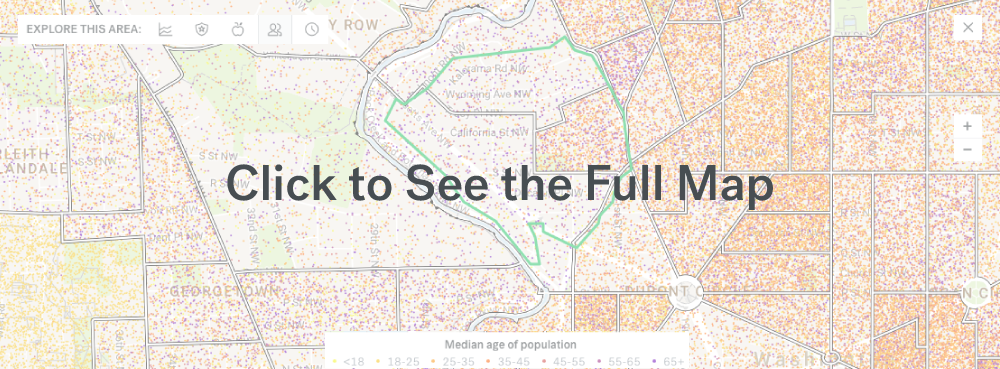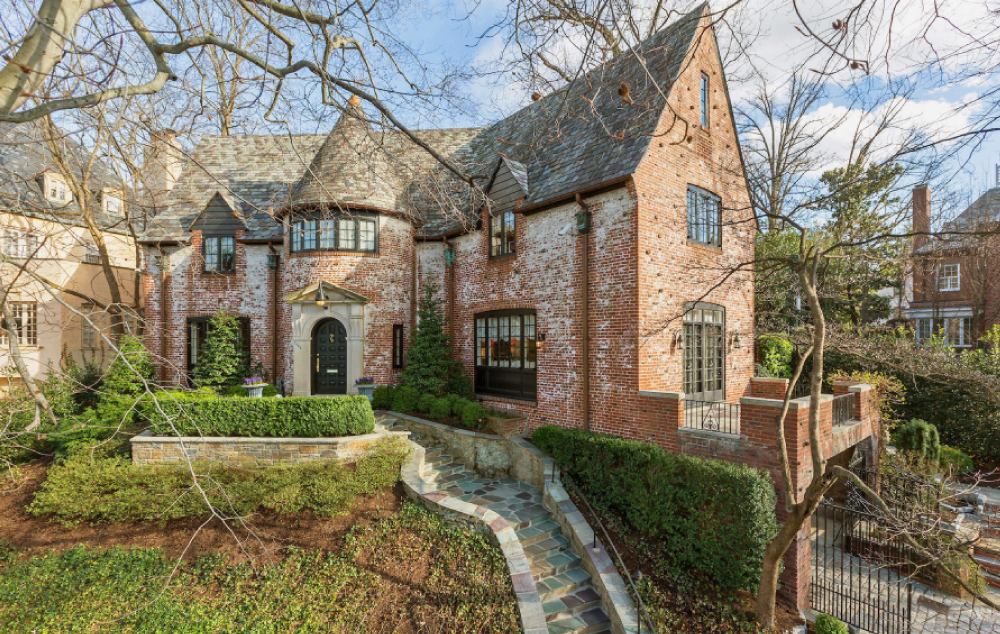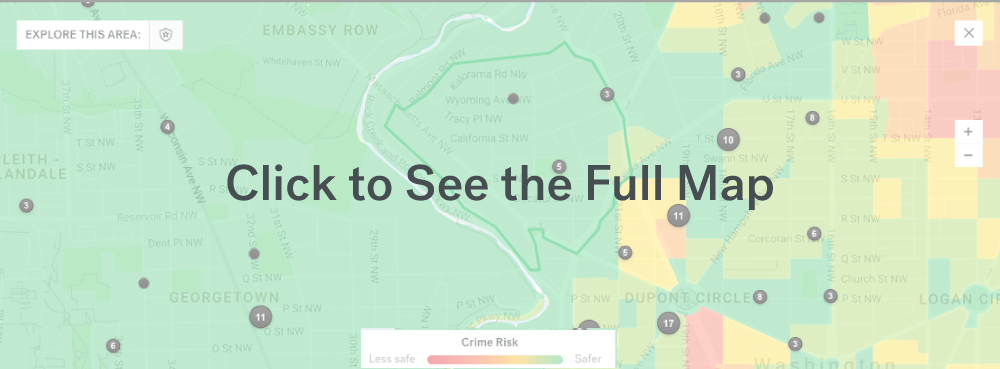Shortly after the 2016 presidential election, Kalorama, Washington D.C.—a small and tranquil neighborhood located northwest of Dupont Circle—suddenly transformed into the epicenter of wealthy and political elites in D.C. First former President Barack Obama and wife Michelle announced they were moving into an 8,200 square-foot home in the area (which they’ve confirmed they are buying). Next, Amazon founder and Washington Post owner Jeff Bezos purchased a $23 million Kalorama house—the largest private home in the entire city. Earlier this year, Secretary of State Rex Tillerson purchased a $5.5 million property. And most recently—and prominently—current First Family members Ivanka Trump and husband Jared Kushner began renting a 6,870 square-foot property in the neighborhood.
So what is it about this neighborhood that has drawn so many influential people through the years?
7 Reasons Why Kalorama is D.C.’s Most In-Demand Neighborhood
-
1. Chances are good you’ll cross paths with the powerful when you walk your dog.
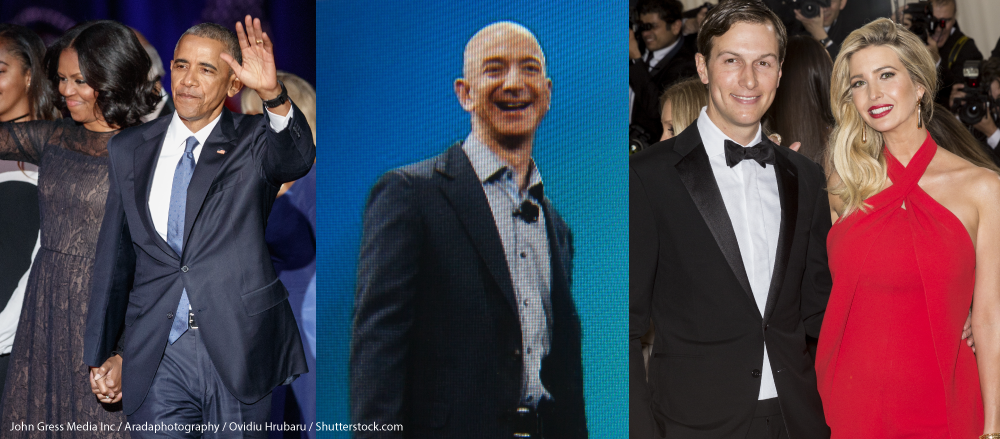 Celebrity-spotting, D.C.-style, is par for the course in Kalorama Heights. Prior to the Obamas moving in, Kalorama had already been home to four former Presidents—Woodrow Wilson, William Howard Taft, Herbert Hoover, and Warren Harding—and former resident Ted Kennedy was known to walk his dogs in the neighborhood’s historic Mitchell Park. So even if you miss out on seeing Sasha walking with Bo, you might see Fox News anchor Chris Wallace, best-selling author Sally Bedell Smith, or hostess and philanthropist Esther Coopersmith wandering around Kalorama’s leafy streets.
Celebrity-spotting, D.C.-style, is par for the course in Kalorama Heights. Prior to the Obamas moving in, Kalorama had already been home to four former Presidents—Woodrow Wilson, William Howard Taft, Herbert Hoover, and Warren Harding—and former resident Ted Kennedy was known to walk his dogs in the neighborhood’s historic Mitchell Park. So even if you miss out on seeing Sasha walking with Bo, you might see Fox News anchor Chris Wallace, best-selling author Sally Bedell Smith, or hostess and philanthropist Esther Coopersmith wandering around Kalorama’s leafy streets. -
2. Single 40- and 50-somethings can do very well here.
Some 68% of Kalorama residents are single, and the average age is 45. Which makes Kalorama prime territory for people seeking an advanced romance. Kalorama’s average household income of $103,000 isn’t as high as Cleveland Park ($111,000), Georgetown ($148,000), or Wesley Heights ($219,000), but it’s still significantly higher than the metro area’s overall average of $93,000.
-
3. Prices are dropping, but don’t get your hopes up: Houses still cost a pretty penny.
If you suspected that a neighborhood populated by the billionaire Trumps and millionaire Obamas might not be the most affordable, you’re on the money. According to Trulia’s Kalorama market trends, the average price per square foot was $853, an increase of 48% compared to the same period last year, and the median rent per month for apartments in Kalorama jumped 152.5% from $5,900 to $9,000 in the span of a year. Some good news, however: median sales prices actually dropped 18.5% year over year, from $2.67 million to $2.18 million—and if you happen to have $6 million on hand, this gorgeous 7 bedroom, 9.5 bath Colonial Revival house with a walk-in wine cooler and home theater that seats nine has your name on it. Or maybe one of these beauties is more your style.
-
4. Unless you want a Slurpee, you’ll have to do your shopping elsewhere.
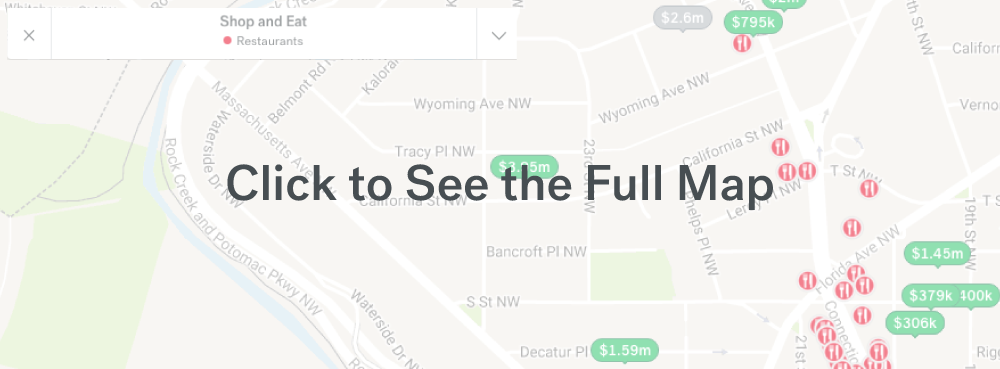 One of the few retail outlets technically located within the bounds of the neighborhood is the 7-Eleven on Columbia Road NW. But the good news is you’re within walking distance of DuPont Circle and a ton of other restaurants, bars, and shops: Sushi Ogawa was named one of the top new sushi spots in the city by Eater, and the Russia House Restaurant & Lounge offers vodka and caviar in an elegant four-story townhouse reminiscent of the era of the Russian tsars. Kalorama’s convenient commute also helps make up for the lack of direct shopping; the neighborhood has easy access to several Metro stations and is only a 15 to 20 minute commute by public transit—most area residents’ preferred method—to 1600 Pennsylvania Ave.
One of the few retail outlets technically located within the bounds of the neighborhood is the 7-Eleven on Columbia Road NW. But the good news is you’re within walking distance of DuPont Circle and a ton of other restaurants, bars, and shops: Sushi Ogawa was named one of the top new sushi spots in the city by Eater, and the Russia House Restaurant & Lounge offers vodka and caviar in an elegant four-story townhouse reminiscent of the era of the Russian tsars. Kalorama’s convenient commute also helps make up for the lack of direct shopping; the neighborhood has easy access to several Metro stations and is only a 15 to 20 minute commute by public transit—most area residents’ preferred method—to 1600 Pennsylvania Ave. -
5. It’s not just the houses—even rental apartment buildings are historic.
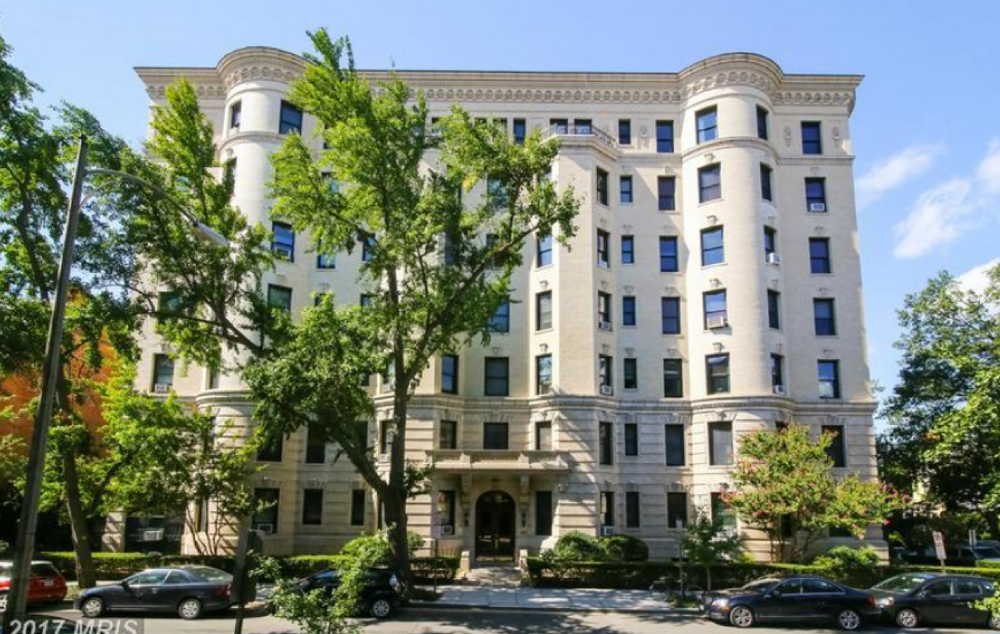 The median year for home construction in Kalorama was 1939—same as posh Cleveland Park, Georgetown, and Dupont Circle. Kalorama’s rental market is home to a number of venerable multi-unit Beaux-Arts apartment buildings, from the Mendota, built in 1902, to The Westmoreland, built in 1905 and listed as one of DC’s “best addresses.” But if you can’t wait for an opening or aren’t looking to buy, this two-bedroom California St. rental is available just across the street from the Westmoreland.
The median year for home construction in Kalorama was 1939—same as posh Cleveland Park, Georgetown, and Dupont Circle. Kalorama’s rental market is home to a number of venerable multi-unit Beaux-Arts apartment buildings, from the Mendota, built in 1902, to The Westmoreland, built in 1905 and listed as one of DC’s “best addresses.” But if you can’t wait for an opening or aren’t looking to buy, this two-bedroom California St. rental is available just across the street from the Westmoreland. -
6. Even the local high school name-drops its Presidential ties.
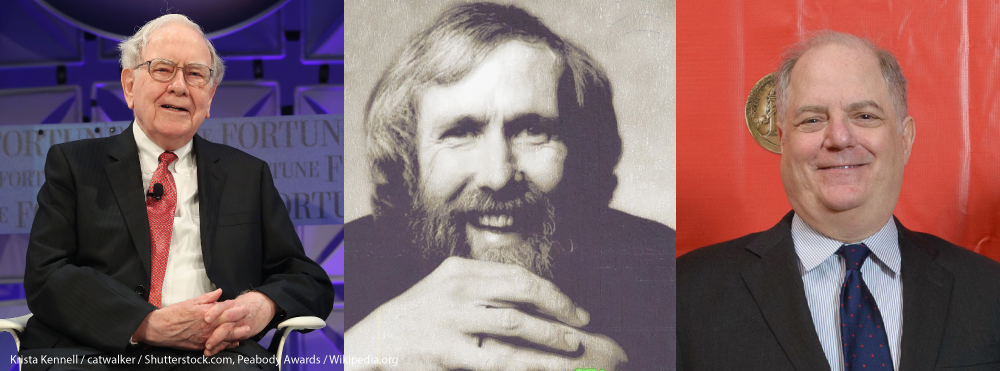 Woodrow Wilson High, located in Tenleytown, serves Kalorama, and is the top non-magnet performer in the D.C. public-school system and the No. 2 high school in the city, according to U.S. News and World Report. Its notable alums include Warren Buffett, Muppets creator Jim Henson, and writer Frank Rich. Part of the neighborhood also feeds into Marie Reed Elementary School in Adams-Morgan, a socially and culturally diverse school that offers a two-way Spanish immersion program and a wide variety of sports, music, and arts extracurriculars—Marie Reed also received a 9 out of 10 rating from Great Schools.
Woodrow Wilson High, located in Tenleytown, serves Kalorama, and is the top non-magnet performer in the D.C. public-school system and the No. 2 high school in the city, according to U.S. News and World Report. Its notable alums include Warren Buffett, Muppets creator Jim Henson, and writer Frank Rich. Part of the neighborhood also feeds into Marie Reed Elementary School in Adams-Morgan, a socially and culturally diverse school that offers a two-way Spanish immersion program and a wide variety of sports, music, and arts extracurriculars—Marie Reed also received a 9 out of 10 rating from Great Schools. -
7. There are safety benefits to living in the midst of multiple secret service details.
Since it stands on the cusp of Embassy Row, it’s no surprise that Kalorama is also home to a number of them, from Afghanistan to Yemen. This means, of course, that the residents are accustomed to the media attention, as well as the security and street barricades prompted by their influential neighbors. With so much additional law enforcement hanging around, it’s not surprising that crime in Kalorama is exceedingly rare—the neighborhood’s most frequent crimes in the past year were theft (45 counts) and burglaries (4 counts). Crime rates grow in the neighborhoods to the east.
